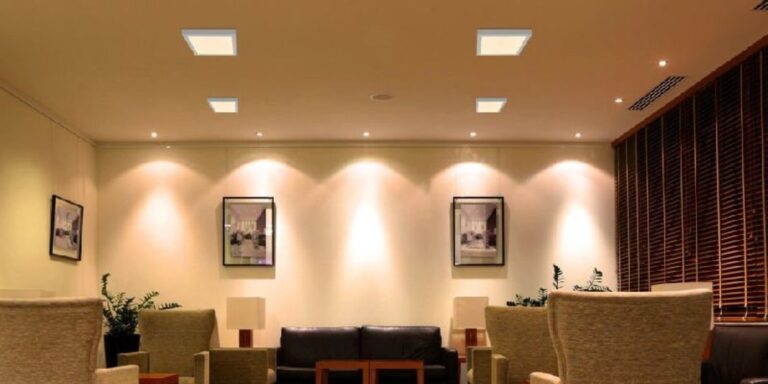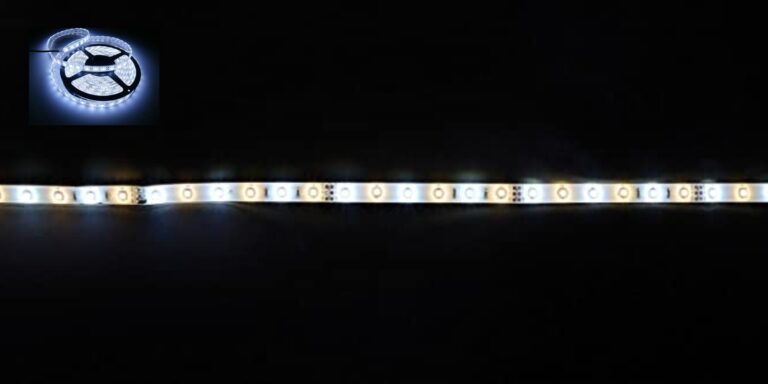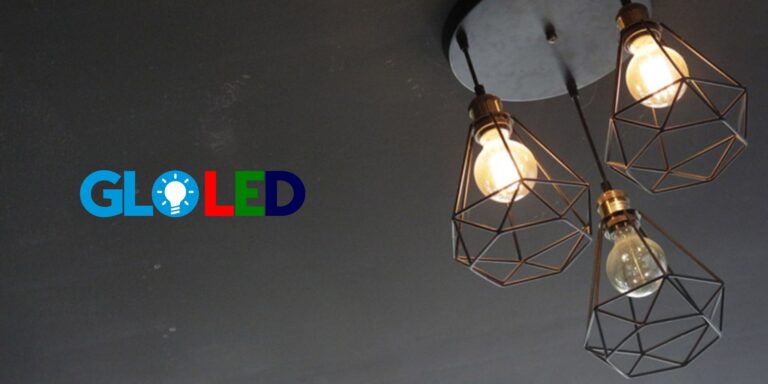
- Home
- About Us
- Product Categories
- Products Application
- Services
- Catalogues
- Blog
- Contact Us
- Gallery
- Videos
- Home
- About Us
- Product Categories
- Products Application
- Services
- FAQs
- Gallery old
- Customer Care
- Contact Us

The Benefits of Sensor Lights for Enhanced Security and Energy Savings
Sensor lights have become increasingly popular in homes, offices, and public spaces because of their ability to enhance security and energy savings. They are designed to detect motion or changes in the environment and automatically switch on or off the lights accordingly. In this blog, we will discuss the benefits of sensor lights and the different types of sensors available.
Benefits of Sensor Lights
- Enhanced Security: Sensor lights play an important role in enhancing the security of your home or office. They detect movement and switch on the lights, alerting the homeowners or security personnel of any suspicious activity in the area. This can help deter intruders and prevent break-ins.
- Energy Savings: Sensor lights can help save energy and reduce electricity bills. They automatically switch off when there is no movement or activity in the area, eliminating the need for manual switching on or off of lights. This reduces energy wastage and ensures that the lights are only on when needed.
- Convenience: Sensor lights provide convenience by automatically switching on when you enter a room or area, eliminating the need for manual switches. This is particularly useful in areas such as hallways, staircases, and entryways, where manual switches may be hard to reach.
Types of Sensors
- Day Light Sensor: A day light sensor, also known as a photocell, is a sensor that detects the level of daylight in an area. It automatically switches on the lights when it gets dark and switches them off when it’s bright enough. This helps save energy by ensuring that the lights are only on when needed. Day Light Sensors are beneficial for LED street lights because they allow the lights to operate at a lower brightness level or automatic on-off during times when they are not needed, such as during daylight hours, saving energy and reducing the overall cost of operation. This also helps to reduce light pollution, which can have negative effects on wildlife and human health.
- PIR Sensor: PIR Sensor stands for Passive Infrared Sensor. It is a type of sensor commonly used in LED lights to detect the presence of people or objects within a certain range. PIR sensors are an important component of LED lights, helping to increase energy efficiency, safety, and convenience in a variety of settings In LED lights, PIR sensors are used to automatically turn the lights on and off when someone enters or exits the area. When a person enters the sensor’s detection range, it will detect their body heat and motion and trigger the LED lights to turn on. The lights will remain on as long as there is motion detected within the range of the sensor, and will automatically turn off after a certain amount of time without any motion detected. PIR sensors are commonly used in areas such as stairwells, hallways, and outdoor areas such as parking lots or walkways. They provide energy savings by ensuring that the lights are only on when needed, and also increase safety and security by providing illumination when someone is present. In addition, PIR sensors can also be integrated with other smart technologies, such as a smart home system, to allow for remote control and monitoring of the lights.
- Motion Sensor: Motion sensors are widely used in LED lights for energy-efficient lighting solutions. A motion sensor, also known as a motion detector or occupancy sensor, is a device that detects movement in its field of view and triggers the light to turn on or off. In the context of LED lights, motion sensors work by detecting motion in a specific area and turning on the lights for a set period. The sensor detects infrared radiation, which is emitted by objects in motion. This signal is then processed by the sensor, which triggers the light to turn on. Motion sensors are particularly useful for outdoor lighting, such as in parking lots, walkways, and yards, where people may only need the lights to be on for a short period. By using motion sensors in LED lights, energy consumption can be reduced by up to 80% compared to standard LED lighting. In addition to energy savings, motion sensors can also improve safety and security. By detecting movement, motion sensors can deter potential intruders or alert security personnel to suspicious activity. Motion sensors can also be used in indoor lighting, such as in offices or homes, to conserve energy and enhance convenience.
- Cupboard Sensor: A cupboard sensor, also known as a cabinet sensor or wardrobe sensor, is a type of sensor commonly used in LED lights designed for indoor use. As the name suggests, this type of sensor is specifically designed for use in cupboards, cabinets, wardrobes, and other similar enclosed spaces. When someone opens the cupboard or cabinet, the sensor is triggered and the LED lights turn on automatically. When the cupboard or cabinet is closed, the sensor detects the absence of movement and turns the lights off. The benefits of using cupboard sensors in LED lights include convenience, energy efficiency, and improved safety. With cupboard sensors, users no longer have to fumble around for a light switch in a dark cupboard, making it easier to find what they need quickly and safely. Additionally, since the lights turn off automatically when the cupboard or cabinet is closed, energy consumption is reduced and electricity costs are lowered. Cupboard sensors are commonly used in LED strip lights designed for use in indoor cabinets and wardrobes. They are typically small in size and easy to install, making them a popular option for those looking to upgrade their home or office lighting system
conclusion, sensor lights are an excellent investment for any home or office. They provide enhanced security, energy savings, and convenience. By choosing the right sensor and sensor light products, you can ensure that your space is well-lit and secure, while also reducing your energy bills.
Recent Posts
-

Enhancing Architectural Beauty with Facade Lighting: The Ultimate Guide
-

innovative lighting solution 3in1 COB Downlights
-

lighting experience with 3 in1 Slim Panels
-

Affordable-3in1-spot-lights-the-ultimate-lighting-solution-for-any-room
-

Enhancing Your Indoor Spaces with Surface Panels
-

Using Profile Strips for Creative Lighting Design
-

Designing Your Space with Pendant Lights: Tips and Ideas
Get Started Today
About Us
GLO LED Private Limited is a leading manufacturer and supplier of LED lighting solutions. GLO LED provides end-to-end solutions, from Consulting, Design, manufacturing, Supply, and Product Installation. The company has the expertise to deliver the orders to a wide range of industries
Social Media
Copyright © GLO LED Private Limited All Rights Reserved.
Design And Developed by RMR Web Tech